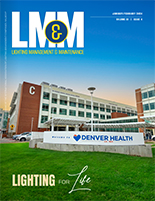The Alliance to Save Energy and Design Lights Consortium (DLC) have collaborated on new research highlighting the limitations of state efficiency policies. The report, “Commercial & Industrial Lighting Lifetime Savings and Peak Demand Analysis,” argues that policies routinely understate energy savings potential of advanced lighting systems—particularly networked lighting controls.
One of the many weaknesses in our industry is the fact that networked controls haven’t taken off the way that they should. The end users, as well as many guilty parties in our own industry supply chain, simply look at the additional cost of the controls and compare that to the first year of additional savings from those controls and say no. The DLC and the Alliance to Save Energy recommend that states controlling the rebate money look at the total lifetime costs. In this case, everyone wins.
As an industry, we are at a crossroads. We can follow the current path which is expected to realize decreasing energy savings or the industry can move forward and encourage products, programs and strategies that emphasize the leverage of a holistic systems approach for lighting. Shifting focus to lifetime savings provides a more realistic capture of the energy savings potential.
We spoke to Tina Halfpenny, Executive Director/CEO of the DesignLights Consortium, who explained the importance of Demand Savings, which can’t happen without networked systems. She said, “Peak demand is changing now. Typically peak demand occurred on a blistering hot day, but now with so much renewable energy, peak demand may occur at the end of the day when the sun sets and the lights come on. Solar and wind are still intermittent sources of power that can be tricky to manage.”
Halfpenny explained that goals are not always aligned even within the same state. For instance 26 states have energy efficiency mandates that do not all include peak demand. Peak demand is expensive and often is met by the dirtiest power sources.
Halfpenny’s goal is for state legislatures to pass bills that provide incentives for end users to allow the utilities to shed load during peak demand. Integrated controls will help make this possible.
Halfpenny went on to say that the report is a roadmap for legislatures to better understand and adjust policy to capture the benefits of lifetime savings from networked systems. Later in our conversation, she discussed smart buildings and how lighting needs to play a larger role. “Lighting should step up and do more. There is a huge opportunity for lighting to be a platform.” She pointed out the few case studies and the lack of documentation for network lighting.
We also spoke to Jeremy Yon, Industry Relations Manager for GE Current, which is a member of the Alliance to Save Energy. He explained, “Not only is the report designed to help end users understand total ownership costs, it is also written for a broader audience to include regulators and legislators.”
Yon emphasized the importance of the document being co-authored by the Alliance to Save Energy, which has strong connections with legislators and regulators, and the DLC, which works closely with the Utilities. The collaboration of both organizations is key as the report is really a tool to help their stakeholders better understand how much money is being left on the table.
Your humble editor previewed the study and found it interesting that the report cites an analysis of technical reference manuals (TRMs) from twelve geographically diverse jurisdictions that reveal that two-thirds of the TRMs do not include a measure for networked lighting controls.
The project’s goal is to better understand the lifetime and peak demand savings potential from commercial and industrial lighting efficiency measures.
In addition to making a great case for network controls, there are some very useful LED penetration numbers in the report and we are further along than I thought. (Page 7.)
EdisonReport applauds their work and we encourage our audience to read the full report and widely disseminate it. Finally, hopefully, we can begin to usher in the era of network controls.



